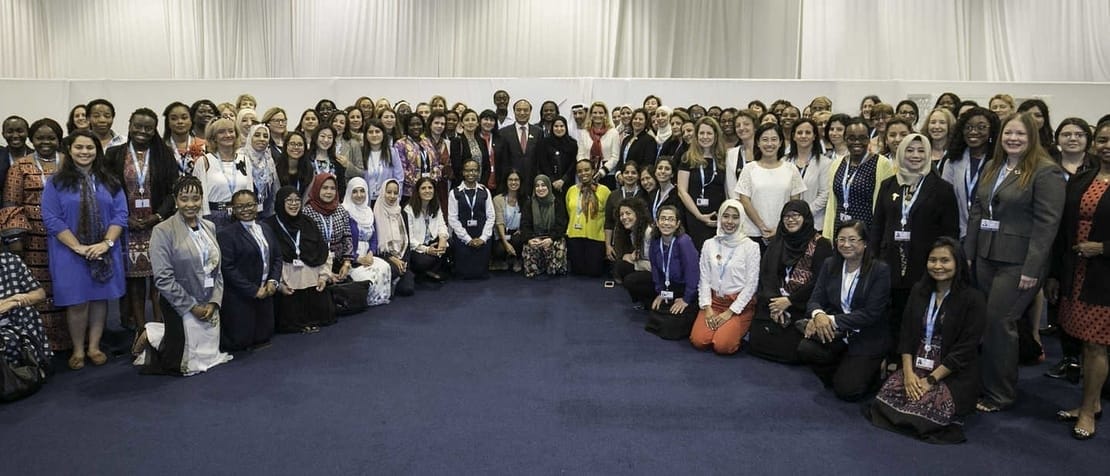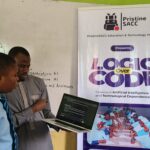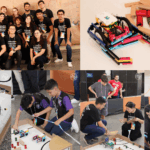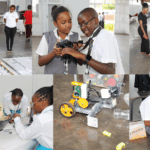ITU recently trialed an advanced software tool developed by the University of Southern California’s Signal Analysis and Interpretation Laboratory (SAIL) to track and measure progress towards gender equality targets at the recent ITU Plenipotentiary Conference 2018 (PP-18).
The “USC Speech Pipeline” tool used machine learning to analyze audio inputs to understand the percentage of speaking time of male and female participants during ITU’s top policy-making event, which was held from 29 Oct to 16 November in Dubai, United Arab Emirates.
ITU has been tracking progress on a number of gender equality targets, including attendance at key meetings, staff gender parity and others. However, this is the first time advanced software has been used to measure progress on these goals.
Based on the findings from the data collected, the percentage of total delegates’ speaking time that a female delegate spoke is roughly consistent with the percentage of women in attendance.
The information provided sheds new light on the participation of women, and will be key to tracking progress towards gender parity at ITU. It also reflects ITU’s commitment to using innovative technologies to help move the needle on gender equality.

Nur Sulyna Abdullah of Malaysia was one of the four women elected to lead decision-making Committees at PP-18
About the ‘USC Speech Pipeline’
The USC Speech Pipeline is an algorithm/software suite with several subcomponents, such as detecting speech in audio recordings, segmenting speakers and identifying gender from voice recordings. Often these steps of “who is talking when and about what” serve as a pre-processing step for downstream content analytics and predictive modeling.
USC’s speech and audio processing is being used in several collaborative efforts. Some examples include: in the health arena – to analyze recordings of diagnostic sessions of autism to support behavioral assessment; in sessions of psychotherapy – for addiction treatment to predict outcomes; in the media/arts arena – speaking time of female characters in film illuminate representational bias; and in defense and security – the software can produce automated verification and recognition of speakers.
Analyzing speaking time at ITU’s top policy-making conference
The Plenipotentiary Conference is ITU’s highest-level meeting. Held every four years, it is attended by delegates from most of ITU’s 193 Member States as well as representatives from some of the 800+ private sector and academic member organizations of ITU. As such, ITU is committed to ensuring that women have a voice at the negotiating table at these conferences.

For the first time, this conference saw more female Committee Chairs leading decision-making groups and ITU’s membership elected the first woman to hold a senior executive position in ITU’s 153-year history.
Based on the findings from the data collected, the percentage of total delegates’ speaking time that a female delegate spoke is roughly consistent with the percentage of women in attendance.
The average speaking time for women was 24.65%. This number should be viewed in the context of the overall percentage of women who attended PP-18 which was 27%.
However, when we consider that, of those most likely to take the floor to make interventions, just 17% of heads of delegation, 19% of deputy heads of delegation, 17% of ministers, 15% of deputy ministers and 9% of ambassadors present at PP-18 were women, the average percentage of speaking time by women in the sessions could indicate that “women may be more likely to take the floor”. This hypothesis needs to be further studied and tested in future conferences and events. Furthermore, it seems that other variables (e.g. gender of the spokespeople of regional groups) often bias the results and, therefore, one has to be cautious when extracting such conclusions.
RELATED: Meet the women leading decision-making Committees at PP-18
While the numbers are not yet showing parity, it does show that women are not just attending this key event, but also participating in discussions and taking the floor to make interventions. Objectively measuring women’s and men’s speaking time is a new approach and helps to raise awareness of a serious issue.

ITU maintains a public repository of gender equality markers on the ITU Gender Dashboard and we continue to work towards increased representation and participation of women in ITU.
ITU is committed to gender equality and is part of global initiatives including the International Gender Champions and EQUALS and ITU leads the International Girls in ICT Day.
More about SAIL
The Signal Analysis and Interpretation Laboratory (SAIL) at the University of Southern California (USC), conducts fundamental and applied research in human-centered information processing. SAIL’s research applications and systems development especially focus on domains with direct societal relevance.
SAIL develops engineering approaches to understand human communication, interaction and behavior and in creating machine intelligence technologies that can support and enhance human experiences. The research focuses on human-centered sensing, computing and information processing with an interdisciplinary emphasis on speech, audio, language and other factors.

















